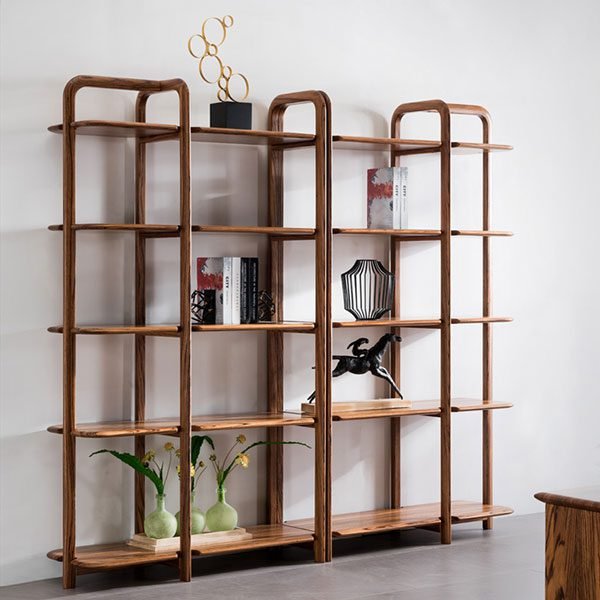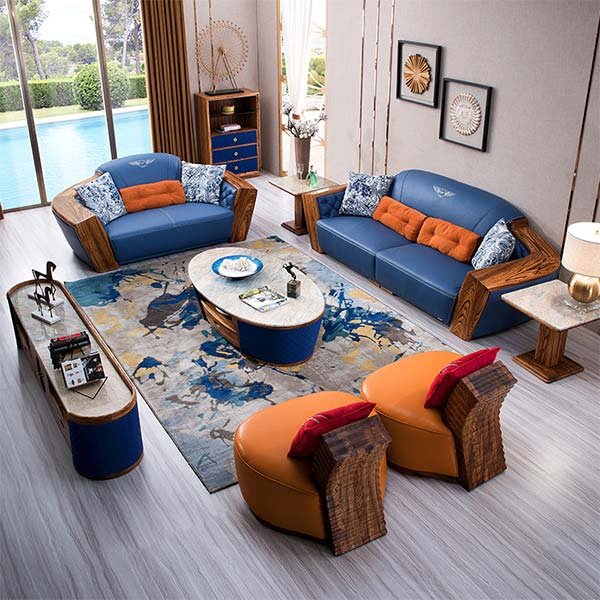“Preserving the Beauty of Wooden Furniture, No Matter the Climate.”
Choosing the Right Wood for Your Furniture in Different Climates
Expert Insights into How to Care for Wooden Furniture in Different Climates
Wooden furniture adds warmth and elegance to any home, but caring for it can be a challenge, especially in different climates. The type of wood you choose for your furniture plays a crucial role in how it will withstand the elements. In this article, we will explore expert insights on choosing the right wood for your furniture in different climates and how to care for it to ensure its longevity.
When it comes to selecting the right wood for your furniture, it’s essential to consider the climate you live in. Different woods have varying levels of resistance to moisture, heat, and cold. For humid climates, teak and cedar are excellent choices as they naturally repel moisture and resist rot. These woods are also resistant to warping and cracking, making them ideal for areas with high humidity.
In contrast, for dry climates, oak and walnut are popular choices. These woods are known for their durability and ability to withstand extreme temperatures. They are less prone to shrinking and expanding, making them suitable for areas with low humidity. However, it’s important to note that even in dry climates, proper care and maintenance are still necessary to prevent any damage to the furniture.
Regardless of the climate, it’s crucial to protect your wooden furniture from direct sunlight. Prolonged exposure to the sun’s UV rays can cause the wood to fade and dry out, leading to cracks and splits. Placing your furniture away from windows or using curtains and blinds to block out the sun can help preserve its appearance and integrity.
In addition to choosing the right wood, regular cleaning and maintenance are essential for wooden furniture in any climate. Dusting your furniture regularly with a soft cloth or feather duster helps prevent the buildup of dirt and debris. Avoid using harsh chemicals or abrasive cleaners as they can damage the wood’s finish. Instead, opt for a mild soap and water solution or specialized wood cleaners recommended by experts.
In humid climates, it’s crucial to control the humidity levels in your home to prevent moisture damage to your wooden furniture. Using dehumidifiers or air conditioners can help maintain a stable humidity level. Additionally, applying a protective sealant or wax to the furniture can provide an extra layer of protection against moisture.
In dry climates, it’s important to keep your wooden furniture hydrated to prevent it from drying out and cracking. Applying a high-quality furniture oil or polish regularly can help nourish the wood and maintain its moisture content. Be sure to follow the manufacturer’s instructions and avoid over-saturating the wood, as this can lead to a sticky or greasy residue.
Lastly, regardless of the climate, it’s essential to avoid placing hot or wet objects directly on wooden furniture. Always use coasters, trivets, or placemats to protect the surface from heat and moisture. This simple precaution can prevent unsightly stains, burns, and water rings.
In conclusion, caring for wooden furniture in different climates requires careful consideration of the type of wood and proper maintenance. Choosing the right wood that is suitable for your climate is the first step in ensuring its longevity. Regular cleaning, controlling humidity levels, and protecting the furniture from direct sunlight are essential practices to keep your wooden furniture looking beautiful for years to come. By following these expert insights, you can enjoy the warmth and elegance of wooden furniture in any climate.
Tips for Protecting Wooden Furniture in Humid Environments
Expert Insights into How to Care for Wooden Furniture in Different Climates
Wooden furniture adds warmth and elegance to any home, but it requires proper care to maintain its beauty and durability. One factor that greatly affects the condition of wooden furniture is the climate it is exposed to. In this article, we will provide expert insights and tips on how to protect wooden furniture in humid environments.
Humidity can cause wood to expand and contract, leading to warping, cracking, and other forms of damage. To prevent these issues, it is essential to control the humidity levels in your home. Here are some tips to help you protect your wooden furniture in humid environments:
1. Use a dehumidifier: Investing in a good quality dehumidifier can help regulate the moisture levels in your home. By reducing excess humidity, you can minimize the risk of damage to your wooden furniture.
2. Keep furniture away from direct sunlight: Direct sunlight can cause wood to dry out and become more susceptible to damage. Position your furniture away from windows or use curtains and blinds to block out the sun’s rays.
3. Use a humidifier during dry seasons: While it may seem counterintuitive, using a humidifier during dry seasons can help maintain a consistent level of moisture in the air. This can prevent the wood from drying out and cracking.
4. Clean regularly: Dust and dirt can accumulate on wooden furniture, trapping moisture and promoting mold growth. Regularly dust and clean your furniture using a soft cloth or a vacuum cleaner with a brush attachment.
5. Avoid excessive water exposure: Water is the enemy of wooden furniture, especially in humid environments. Clean up spills immediately and use coasters or placemats to protect surfaces from moisture.
6. Apply a protective finish: Applying a protective finish, such as varnish or wax, can create a barrier between the wood and the surrounding environment. This can help prevent moisture from penetrating the wood and causing damage.
7. Use silica gel packets: Silica gel packets are excellent moisture absorbers. Place them inside drawers or cabinets to help control humidity levels and protect your wooden furniture.
8. Maintain proper ventilation: Good air circulation is crucial in preventing excess humidity. Ensure that your home has proper ventilation, especially in areas where wooden furniture is located.
9. Monitor humidity levels: Invest in a hygrometer to monitor the humidity levels in your home. Ideally, the humidity should be between 40% and 50% for wooden furniture to thrive.
10. Seek professional advice: If you live in an extremely humid environment or have valuable antique wooden furniture, it may be wise to consult a professional. They can provide personalized advice and recommend specific products or treatments to protect your furniture.
In conclusion, caring for wooden furniture in humid environments requires proactive measures to control moisture levels and prevent damage. By following these expert insights and tips, you can ensure that your wooden furniture remains beautiful and functional for years to come. Remember, prevention is key when it comes to protecting your investment in wooden furniture.
Maintaining Wooden Furniture in Dry Climates: Dos and Don’ts
Maintaining Wooden Furniture in Dry Climates: Dos and Don’ts
Wooden furniture adds warmth and elegance to any home, but caring for it can be a challenge, especially in dry climates. Dry air can cause wood to shrink, crack, and lose its luster over time. To help you keep your wooden furniture in top condition, we have gathered expert insights into the dos and don’ts of maintaining wooden furniture in dry climates.
Do: Keep the humidity levels stable
One of the most important things you can do to care for wooden furniture in a dry climate is to maintain stable humidity levels. Dry air can cause wood to lose moisture, leading to shrinkage and cracks. Invest in a humidifier to add moisture to the air, especially during the winter months when indoor heating can further dry out the air. Aim for a humidity level between 40% and 60% to keep your wooden furniture in optimal condition.
Don’t: Place furniture near heat sources
In dry climates, it is crucial to keep wooden furniture away from direct heat sources such as radiators, fireplaces, or heating vents. The heat can cause the wood to dry out and become more susceptible to damage. Instead, position your furniture in a location where it is not exposed to direct heat, ensuring its longevity and beauty.
Do: Apply a protective finish
To protect your wooden furniture from the effects of dry air, apply a protective finish. This can be in the form of wax, oil, or varnish, depending on the type of wood and the desired look. A protective finish acts as a barrier, preventing moisture loss and reducing the risk of cracking. Regularly inspect the finish and reapply as needed to maintain its effectiveness.
Don’t: Use harsh cleaning products
When cleaning wooden furniture in a dry climate, avoid using harsh cleaning products that can strip away the protective finish and dry out the wood. Instead, opt for mild, non-abrasive cleaners specifically designed for wood. Gently wipe the furniture with a soft cloth or sponge, and always follow the manufacturer’s instructions for cleaning and maintenance.
Do: Dust regularly
Dust can accumulate on wooden furniture, especially in dry climates where static electricity attracts particles. Regular dusting is essential to prevent scratches and maintain the furniture’s appearance. Use a soft, lint-free cloth or a microfiber duster to gently remove dust from the surface. Avoid using feather dusters or rough materials that can scratch the wood.
Don’t: Expose furniture to direct sunlight
In dry climates, the intense sunlight can cause wooden furniture to fade and dry out. To protect your furniture, avoid placing it in direct sunlight or use curtains and blinds to filter the light. If possible, rotate the furniture periodically to ensure even exposure to sunlight and prevent uneven fading.
In conclusion, caring for wooden furniture in dry climates requires attention and proper maintenance. By keeping humidity levels stable, avoiding direct heat sources, applying a protective finish, using gentle cleaning products, dusting regularly, and protecting furniture from direct sunlight, you can ensure that your wooden furniture remains beautiful and functional for years to come. Remember, prevention is key when it comes to preserving the natural beauty of wood in dry climates.
Заключение
Заключение: Эксперты рекомендуют следующие меры по уходу за деревянной мебелью в различных климатических условиях:
1. Влажные климатические условия: Во избежание поглощения влаги деревом, рекомендуется использовать влагоотталкивающие средства, такие как лак или воск. Также важно обеспечить хорошую вентиляцию помещения и избегать прямого контакта с водой.
2. Сухие климатические условия: Во избежание пересыхания дерева, рекомендуется использовать увлажнители воздуха или размещать контейнеры с водой рядом с мебелью. Регулярное нанесение масла или воска также поможет сохранить естественную влагу дерева.
3. Жаркие климатические условия: Важно избегать прямого солнечного света на деревянную мебель, так как это может привести к выцветанию и деформации. Рекомендуется использовать шторы или жалюзи для защиты от солнца.
4. Холодные климатические условия: Во избежание повреждений от мороза, рекомендуется избегать резких перепадов температуры и использовать увлажнители воздуха для поддержания оптимальной влажности.
В целом, регулярное очищение и обслуживание деревянной мебели, включая удаление пыли и использование мягкой ткани или щетки, помогут сохранить ее в хорошем состоянии в любом климате.



